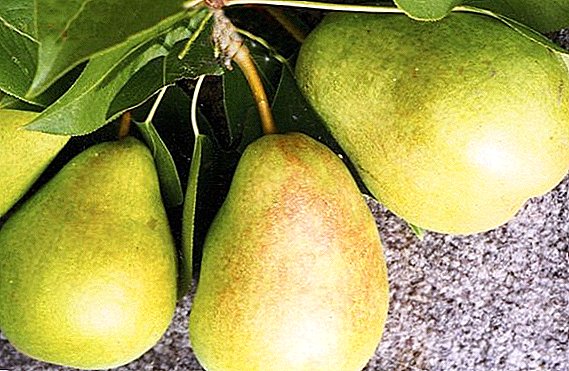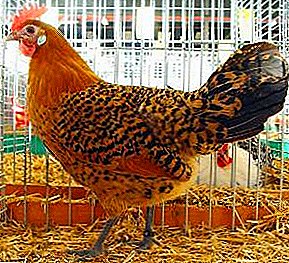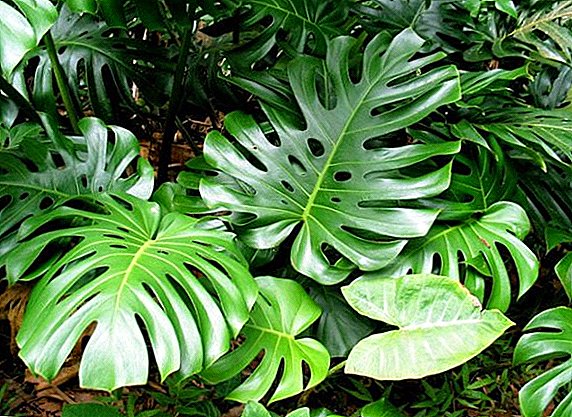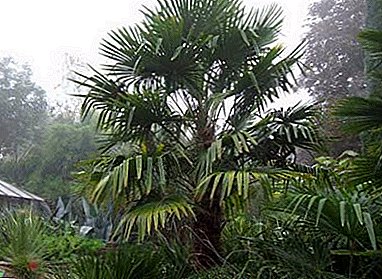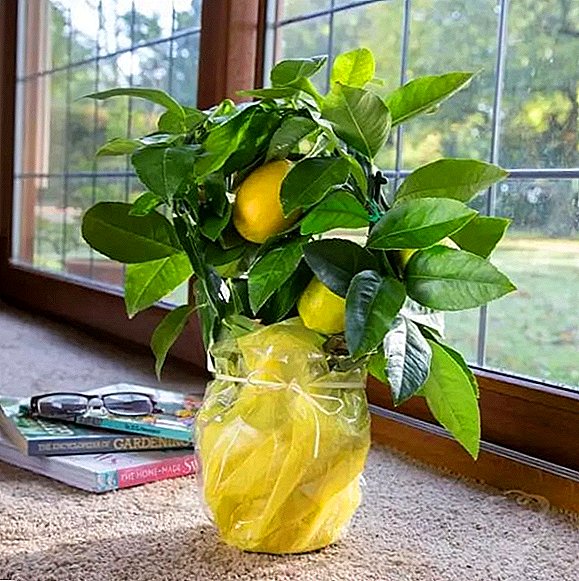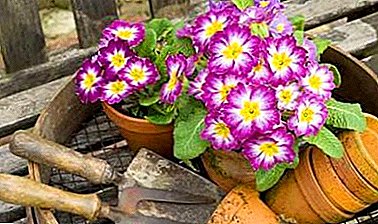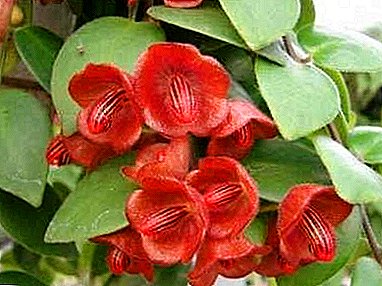
"Eschaninthus" - a very rare flower.
In growth unpretentious. Loves moderate watering, bright natural light.
Propagated by seeds and cuttings. With good care, it blooms magnificently and becomes sprawling.
General description of the plant
The flower "Eschaninthus" is an extremely rare representative of the flora, for its appearance, the plant is often confused with the "Columnay". It got its name from two words: "aischyneia" - a curve and "anthos" - blooming. It grows in the tropics. Prefers forests of Malaysia, Vietnam, Singapore, Thailand, Indonesia.
In the wild, grows in the form of lianas. The plant wraps tightly around the growing trees. Refers to epiphytic subspecies. In the Russian Federation, Ukraine, Belarus to meet him is almost impossible. Those lucky enough to buy Aeschienanthus can be proud of this discovery.
In room conditions can grow in the ampel way. Looks good in hanging pots, bookshelves, greenhouses. Serves as a decor green corner. The branches of this flower are hanging down. On their tips small inflorescences form with deliciously smelling clusters.
Shades of flowers vary depending on the subspecies. Can be orange, raspberry, maroon, bright blood. Branches with lots of leaves. Leaves of emerald shade, pleasant to the touch. Many growers compare the plant with "Gipotsirtom" and "Columney."
Views from the photo
Mona lisa
The most common subspecies. Refers to ornamental plants. Very naughty, requires special care. It blooms only with careful care, additional fertilizing and comfortable conditions. The flowers are curved, bright bloody shade.
The branches are hanging down with a large number of dense emerald leaves. “Eschinantus Mona Lisa”, when caring at home, has no distinct differences from other species.
Nice
Refers to evergreen shrubs. Looks great in hanging pots. Endowed with elongated stems. On the tips of the shoots bloom tubular flowers of burgundy hue. They are collected in large bundles of 10-13 pieces each. The plant has large emerald leaves. Care at home for Esquinanthus Beautiful does not require any special actions.
Caroline
Refers to the ampelous plants. Leaflets oblong, oval. In length reach 5-8 cm, in width - 3-6 cm. Young leaves are endowed with small villi. Flowers in the form of cups, crimson hue.
Marble
It grows well in indoor conditions. It is appreciated by gardeners for magnificent decorative foliage. Got its name thanks to the colorful leaves. Emerald green leaflets with faded asymmetrical transverse lines.
The reverse part of the sheet plate with a pronounced pattern of brown hue. Flowers tubular, emerald color. It grows in India and China. In wild conditions, the length of the stems grow to 9-12 cm. Shoots can reach 55-65 cm. Thanks to the lateral processes, this representative of the flora grows well in width.
Twister
It is a hybrid of the Rasta subspecies. It has glossy, emerald sheets with small curls. It blooms beautifully and abundantly. Flowers orange-burgundy hue.
Home care
Crown formation
 To preserve the decorativeness of the plant after flowering, it is cut annually.
To preserve the decorativeness of the plant after flowering, it is cut annually.
Must cut adult elongated stems.
In their place grow new shoots.
After that, the flower becomes more spreading and lush.
Cut cuttings can be used for reproduction.
Watering
The plant prefers moderate watering. It is important to wait for the top layer of the substrate to dry. Flower can not be poured. In this case, root rot will begin. For irrigation, it is best to use soft water at room temperature. Water should not contain chemical impurities. Hard water with an excess of trace elements calcium negatively affects the health of the plant.
Air humidity
Since the plant was imported from the tropics, it needs a very high humidity. The flower does not tolerate drought and hot weather. When the air is too dry, this representative of the flora begins to throw off the leaves and unopened buds. To maintain the necessary atmosphere, the flower is periodically sprayed with warm water from a sprayer.
Planting and transplanting
Transplantation is carried out in the spring. Young plants are transplanted annually. Adults 1-3 times a year. For transplanting choose deeper and wider capacity. The diameter of the new pots should be 1-3 cm larger than the previous ones, since this representative of the flora loves closer dishes.
Drainage is made of pebbles or broken bricks at the bottom. Soil choose low acid.
Growing from seed
 Reproduction Aeschienanthus occurs by cutting. To do this, you must use the stalks remaining after trimming. The most difficult process is growing a plant from seeds.
Reproduction Aeschienanthus occurs by cutting. To do this, you must use the stalks remaining after trimming. The most difficult process is growing a plant from seeds.
Typically, this method is used by breeders for growing and hybridizing new varieties of flowers. From ripe buds collect seeds. Pour on paper and air the day. Then in the prepared substrate they are sown to a depth of not more than 0.5 cm.
Sprayed from a spray bottle and covered with a glass jar, creating a greenhouse effect. In order not to disturb the atmosphere of the greenhouse and not to run cold air, future seedlings are watered through the container tray.
After some time, the first shoots should appear. After rooting, they are dived and transplanted into pots for permanent growth.
Temperature
This representative of the flora belongs to the heat-loving plants. A slight decrease in temperature in winter has a positive effect on the bookmark of future buds. The optimum temperature for growth in the summer is 22-26 ° C. In winter, the temperature should not fall below 17 ° C. In such conditions, the plant begins to bloom in early spring. A constant year-round temperature of 22-26 ° C is allowed. But in this case, the flowering will be late and short.
Important! The most important condition for growth is the absence of open winds and drafts.
It is forbidden to place a flower on the open air flow. Otherwise, due to frequent temperature fluctuations, the Esquinanthus will become very sick.
Lighting
 In the wild, this plant grows on the second tier. The sun partially falls on it. The flower is adapted to the penumbra, which is thrown close to growing shrubs and trees.
In the wild, this plant grows on the second tier. The sun partially falls on it. The flower is adapted to the penumbra, which is thrown close to growing shrubs and trees.
Therefore, when growing in greenhouses, apartments or houses, this representative of the flora needs conditions close to wild nature.
The best lighting for a flower is bright natural light. It does not tolerate direct sunlight. With a lack of light, the plant will not bloom.
- Setcreasia Violet (purple);
- Money plant (Potos);
- Tolmia;
- Tunbergia;
- Philodendron;
- Tseropegiya Sanderson;
- Cyanotis;
- Cissus;
- Epipremnum.
Diseases and pests
 The plant may be susceptible to mealybugs, aphids and thrips.
The plant may be susceptible to mealybugs, aphids and thrips.
Usually pests appear along with new potted flowers or ground.
When insects are found, the flower is sprayed with insecticides.
You can also use folk remedies - a solution of potassium permanganate or melted soap.
Important! Diseases can occur with improper care.
Do not allow temperature drops, excessive irrigation, drafts. Otherwise, fungal diseases, mold, gray mold will appear.
Eschaninthus prefers breathable primer. Loves bright natural lighting, moderate watering, feeding. It grows well in hanging pots in bright rooms without drafts. With poor care it can be affected by pests. Looks great in hanging pots, greenhouses, glazed loggias and botanical gardens.


